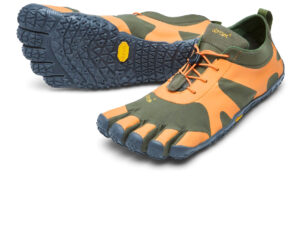Well, let me start with the basics; Minimalist shoes are simply a type of footwear that is designed to allow the foot to move more naturally. They have a thin, flexible sole that provides minimal support, and they often have a wider toe box to allow the toes to really spread out. Minimalist shoes are becoming increasingly popular – as you probably have noticed, everyone’s wearing them! People are looking for ways to improve their foot health and reduce their risk of injury, Enter; Minimalist Shoes.
History of Minimalist Shoes
The concept of minimalist shoes is not new. In fact, people have been walking barefoot for centuries! Remember there was a time we didn’t even have shoes… However, the popularity of minimalist shoes has increased in recent years, thanks in part to the work of Christopher McDougall, author of the book “Born to Run.” (If you haven’t already, you must check it out). In his book, McDougall argues that humans are naturally designed to run barefoot, and that wearing traditional running shoes can actually lead to injuries. Yet, we’ve been told the opposite for so long.
Benefits of Minimalist Shoes
There are a number of benefits to wearing minimalist shoes. Some of the benefits include:
- Improved foot health. Minimalist shoes can help to prevent and correct a number of foot problems, including bunions, hammertoes, plantar fasciitis, and ingrown toenails. They’re their very own pedicure pods!
- Reduced risk of injury. Minimalist shoes can help to reduce the risk of injuries such as the dreaded shin splints, stress fractures, and ankle sprains. Ouch.
- Improved balance and proprioception – these are super important for preventing falls. We do not want falls, guys.
- Increased range of motion in the ankles and feet, this makes walking and running more comfortable and efficient. Plus more fun and enjoyable 🙂
- Minimalist shoes can actually help to increase the muscle strength in the feet and legs, which can help to improve posture and reduce back pain. Always a winner!
- Increased awareness of the ground – they can help you to feel the ground more, which can help you to walk and run more naturally and avoid any nasty injuries. You can be at one with the ground.
- Minimalist shoes can help you to develop a more natural gait (that’s the manner in which you walk, including your own personal pattern) this is more efficient and less stressful on the ol’ joints.
Types of Minimalist Shoes
There are a variety of different types of minimalist shoes available on the market. Some of the most popular types include:
Barefoot shoes Barefoot shoes are the most minimalist type of shoe. They have a very thin, flexible sole and a wide toe box. More space to spread out and get comfy.
Minimalist running shoes Minimalist running shoes are designed for ummm, you guessed it! Running. They have a slightly thicker sole than barefoot shoes, but they still provide minimal support.
Minimalist walking shoes Minimalist walking shoes are designed for walking- obvs. They have a slightly thicker sole than barefoot shoes, and they often have more cushioning – they’re still nowhere near ‘regular’ shoes – who wants to be regular anyway?!
Minimalist sandals Minimalist sandals are a good option for people who want the benefits of minimalist shoes, but who also want their feet to be exposed to the air. Hello Summer.
How to Choose Minimalist Shoes
If you are considering switching to minimalist shoes – I mean, why wouldn’t you? There are a few things you should keep in mind. Only fools rush in afterall. Here goes!
First, it is important to choose minimalist shoes that are appropriate for your activity level. If you are going to be doing a lot of running or walking, you will need a different type of minimalist shoe than if you are just going to be wearing them around the house. Think to yourself ‘’how do I want these shoes to best serve my lifestyle?’’.
Second, you should choose minimalist shoes that fit well. Minimalist shoes should be snug but not too tight. They should also allow your toes to spread out naturally. Rubbing or pinching are not welcome here.
Finally, you should choose minimalist shoes that are made from a breathable material. This will help to keep your feet cool and dry. Ain’t nobody got time for stinky feet.
How to Transition to Minimalist Shoes
If you are new to minimalist shoes, it is important to transition to them slowly. You should not start wearing minimalist shoes all day long (or all night for that matter) right away. Instead, you should start by wearing them for short periods of time and gradually increase the amount of time you wear them. This will give your feet time to adjust to the new footwear. Treat those toes with some patience – before you know it your old style shoes will be a thing of the past.
Happy choosing and let us know how you get on!
Fern x









